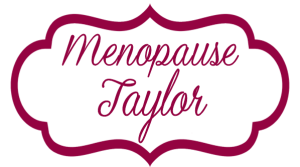“How Am I Supposed To Find ‘Lumps’ In My Already-Lumpy Breasts?”
Sometimes I’m shocked by things that sound like an absolute oxymoron to me. And yet, other people seem to be unfazed by them. I wonder, do they simply fail to really consider how ridiculous the statement is, or do they read between the lines and understand some hidden meeting that is lost on me?
For instance, “Family vacation” sounds ludicrous to me. Being with family is no vacation! “New and improved” seems like a completely contradictory pairing of words. Which is it: old and improved or brand new? It can’t be both. Why do we drive on a parkway and park on a driveway?
I don’t know if other people spend time thinking about these oxymoronic concepts, but I can’t seem to help it. And when it comes to teaching women about menopause, I’m shocked at the things doctors say that automatically set their patients up for failure.
One of those things falls into the realm of breast self exam.
When a doctor tells you to check your own breasts, they usually tell you to feel for “lumps.”
Most patients simply nod their heads when they hear this, and supposedly carry out that exercise with nary a problem. Or do they?
I believe that any woman who has gone home and tried to feel for “lumps” probably discovers immediately that she does indeed have lumps … a lot of them. And yet, she’s supposed to feel for lumps in her already-lumpy breasts!
So, my question is, why would any doctor to tell you to feel for lumps in your already-lumpy breasts? And how would any patient succeed at carrying out the task?
The sad thing about all this is that the doctor means well. And the patient has every intention of following the doctor’s recommendation. But the word choice for the entire breast self exam is all wrong.
If your breasts are full of lumps, how in the world would you find a “lump?”
Words are powerful. Words can set you on the path to success or doom you to failure. I choose my words very carefully. It makes all the difference in the world for my patients. In some cases … as with breast self exam, my words can make the difference between life and death.
So I never tell patients to feel for lumps.
The fact is that all breasts are lumpy. In medical terminology, we even have a name for that lumpy tissue in our breasts. It’s called “fibrocystic tissue.”
I’ll bet you’ve heard the word, “fibrocystic” before. But you’re probably a little confused right now. And that’s probably because you’ve always heard, “fibrocystic disease” instead of “fibrocystic tissue.”
Well, if all breasts have fibrocystic tissue and it’s normal, why would we call it a disease? Another oxymoron. It’s like saying, “healthy heart disease.”
So “fibrocystic tissue” is normal, and we all have it. In fact, fibrocystic tissue is what you have in mass quantities in your breasts when you’re young. It’s what makes your breasts shapely, perky, and firm. It’s what enables you to win the wet T-shirt contest when you’re in your twenties. We actually like the stuff! It’s sexy. It’s no disease.
But fibrocystic tissue is what you lose as you march through life. Pregnancy, breastfeeding, weight gain, and aging all contribute to loss of your fibrocystic tissue. And when you lose fibrocystic tissue, it gets replaced with fat.
While fibrocystic tissue is very lumpy, fat is not nearly as lumpy. So, your breasts are much lumpier before you get pregnant, breastfeed, gain weight, and age. And they’re much less lumpy after all that.
So if you’re a young woman with plenty of lumpy fibrocystic tissue and you feel for lumps, I guarantee you’re going to find lumps! And that’s going to make you feel like you don’t know what you’re doing. And that’s going to make you stop doing your breast self exam. And that’s going to defeat the whole purpose of your doctor’s recommendation.
So I never, ever tell a patient to feel for “lumps.” Instead, I tell her to feel for “rocks” or “pebbles.”
Ahh. Do those terms conjure up a different picture in your mind? Think about it. A “lump” is poorly defined, whereas a “rock” or “pebble” is well defined. A “lump” is squishy or deformable, whereas a “rock” or “pebble” is hard and non-deformable. A “lump” is not distinct. I’ll bet you couldn’t draw a lump if you felt one in your breast. But a “rock” or “pebble” is distinct. It has well defined borders and feels distinctly different from the surrounding tissue … so much so that you could actually draw it on paper. You could probably describe the shape and size of a “rock” or “pebble,” but not a “lump.”
If I told you that all the lumpy stuff is normal, and all I want you to feel for are “rocks” or “pebbles,” do you think you’d be more successful with checking your own breasts? Would you feel more confident in your ability? Of course you would!
If you find a “lump” in your breast, you’ll probably keep feeling and feel unsure as to whether it’s really a “lump.” You’ll be undecided as to its significance and unsure as to whether or not it really constitutes a “lump.”
But if you find a “rock” or a “pebble” in your breast, I guarantee it’s going to get your attention in a big way. You’ll know right away that it’s significant.
So stop feeling for “lumps” in your already-lumpy breasts. Start feeling for “rocks” or “pebbles” instead.
Now go on a “family vacation” in your “new and improved” car. Be sure to “drive on the parkway” and “park in the driveway.” If you roll over a few “lumps,” you’ll hardly notice them. But if you encounter “rocks” or “pebbles,” they’ll really get your attention.


